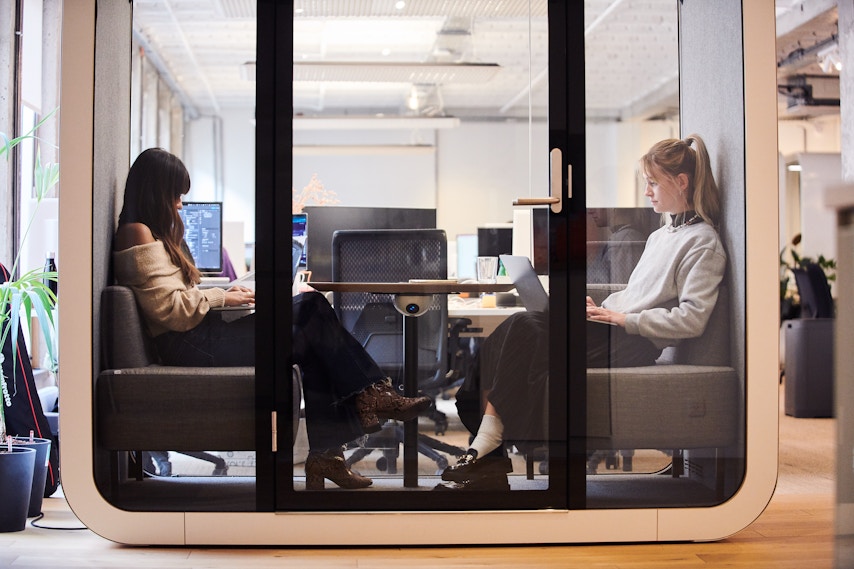KIT & SPLIT Days: Your Rights & Responsibilities as An Employer

More and more, flexible working arrangements are becoming the norm for organisations. That includes policies like KIT days (or Keeping and Touch days) and SPLIT days, designed to keep employees on parental leave engaged.
While not a statutory requirement, KIT days can be a a helpful way for employees to stay in the loop while enjoying a smoother transition back to worklife.
Let’s face it: it can be daunting for any employee to simply pick up where they left off after an extended period of leave. Having a few days where they can check in and catch up with colleagues and managers can make the return to work a little more palatable (read less Sunday Scaries).
Let’s learn a little bit more about what KIT and SPLIT days are, and what your rights and responsibilities are as an employer in providing these.
What are KIT days?
This funky sounding acronym stands for “Keeping in Touch” days. A KIT day gives an employee on Maternity or Adoption leave the opportunity to go back into work and pick up their normal duties.
While adorable, bringing Baby into work to meet colleagues doesn’t count as a KIT day - your employee still needs to do some kind of work. But the parameters around how much time they must spend and when to come in are flexible - they’re down to you and said employee to agree on.
The employee is paid at their usual rate for these hours and allowed to resume their leave again afterwards if they choose.
As mentioned at the start, employers are not obligated to offer KIT days to their employees. In other words, KIT days are not an automatic workplace right, nor are they something an employer can force on specific employees. It’s also important to treat employees taking these days just as you would any other employee at your organisation.
What is the difference between KIT and SPLIT days?
While KIT days apply specifically to one parent (say a mother on Maternity Leave) SPLIT days, or Shared Parental Leave In Touch days apply to employees on Shared Parental Leave. In essence, SPLIT days are very much the same as KIT days, though slightly more flexible. Parents on shared leave are entitled to receive up to 20 SPLIT days without ending their leave.
It’s also worth noting that SPLIT days should be used in addition to KIT days, and that KIT days can be carried forward into shared parental leave. They’ll need to stop their Maternity Leave first before starting Shared Parental Leave in order to use their 20 SPLIT days.
How many KIT days are employees entitled to?
During their Parental or Adoption leave, employees can work up to 10 Keeping in Touch days. That is, without bringing their paid leave to an end. For Shared Parental Leave In Touch, that allowance is higher - employees are entitled to work up to 20 days without bringing their leave to an end.
What can KIT and SPLIT days be used for?
While some employees might decide to take the odd KIT day here or there, others may use them as a way to resume work part-time (say by coming back into the office one day a week). KIT days are also a great way for employees to:
Keep in touch with and socialise with close colleagues
Receive updates on any changes that may have come up during their leave
Offer additional support on ongoing projects when other members of the team take leave
Ask any questions they may have about their leave, pay or role
Do employees get full pay for KIT days?
As we covered before, KIT days are not a statutory requirement, therefore there’s no specific guidance for what rates to pay.
The rate you pay needs to be at the very least in line with minimum wage. It should also be agreed on with the employee in question before they start to come in for their KIT days.
Most employers will happily pay for a full day’s work so retention or engagement doesn’t drop. Maternity Action backs this up as good practice, given the employee will likely incur the same expenses they usually would (e.g. travel and childcare costs) for these types of days.
Are KIT days paid on top of SMP?
They can be. One option is to top up the employee’s daily rate of Statutory Maternity Pay. Alternatively, KIT days can be paid in addition to SMP. It’s up to you as the employer to define these payment terms in your maternity policy.
As mentioned before, you’ll want to make sure the employee is at the very least receiving minimum wage for the hours they work (that’s excluding the SMP daily rate as calculated below).
For example: If the employee works two hours, and you top up their SMP to a full day’s pay, the additional pay needs to equate to more than minimum wage for two hours worked. If you only top up the SMP for these two hours, this would take you below minimum wage.
How to calculate the SMP daily rate:
To determine the daily rate for SMP use the following formula.
Weekly rate of 172.48 / 7 days = SMP daily rate
Do KIT days have to be full days?
Employee’s don’t have to work a full 8-hour day for it to be classed as a KIT day. If they come to work, even just for a few hours they can count this toward their allowance. This is useful, say, if an employee wants to come in to do an hour’s training or just to catch up with their manager.
As an employer, it’s important not to force an employee to work their full daily hours over the ten days.
KIT & SPLIT days - employer responsibilities
By now you probably have a sense of some of your responsibilities that comes with providing KIT or SPLIT days. Here’s a quick round-up.
KIT and SPLIT are voluntary, so it’s important employees are not forced to work on these days
Employees must also be given adequate notice for these days, and not reprimanded for deciding not to show up on these days.
When it comes to SPLIT days, employers must ensure employees are, in fact, eligible for this type of parental leave and meet requirements for SPLIT day entitlement.
Employers must also provide employees with written confirmation of their SPLIT day arrangement, and adjust pay accordingly
Just as any other normal work day, you need to ensure employee health and safety isn’t compromised on these days
If additional training is required, you’ll need to provide this too
To sum things up
KIT or SPLIT days can be an incredibly helpful tool for your employees, and a great way for employees on parental leave to not feel left out and stay connected with colleagues while brushing up on their skills and abilities. But in providing these days, there are several responsibilities you need to observe as an employer to ensure employees make the most of these days.








